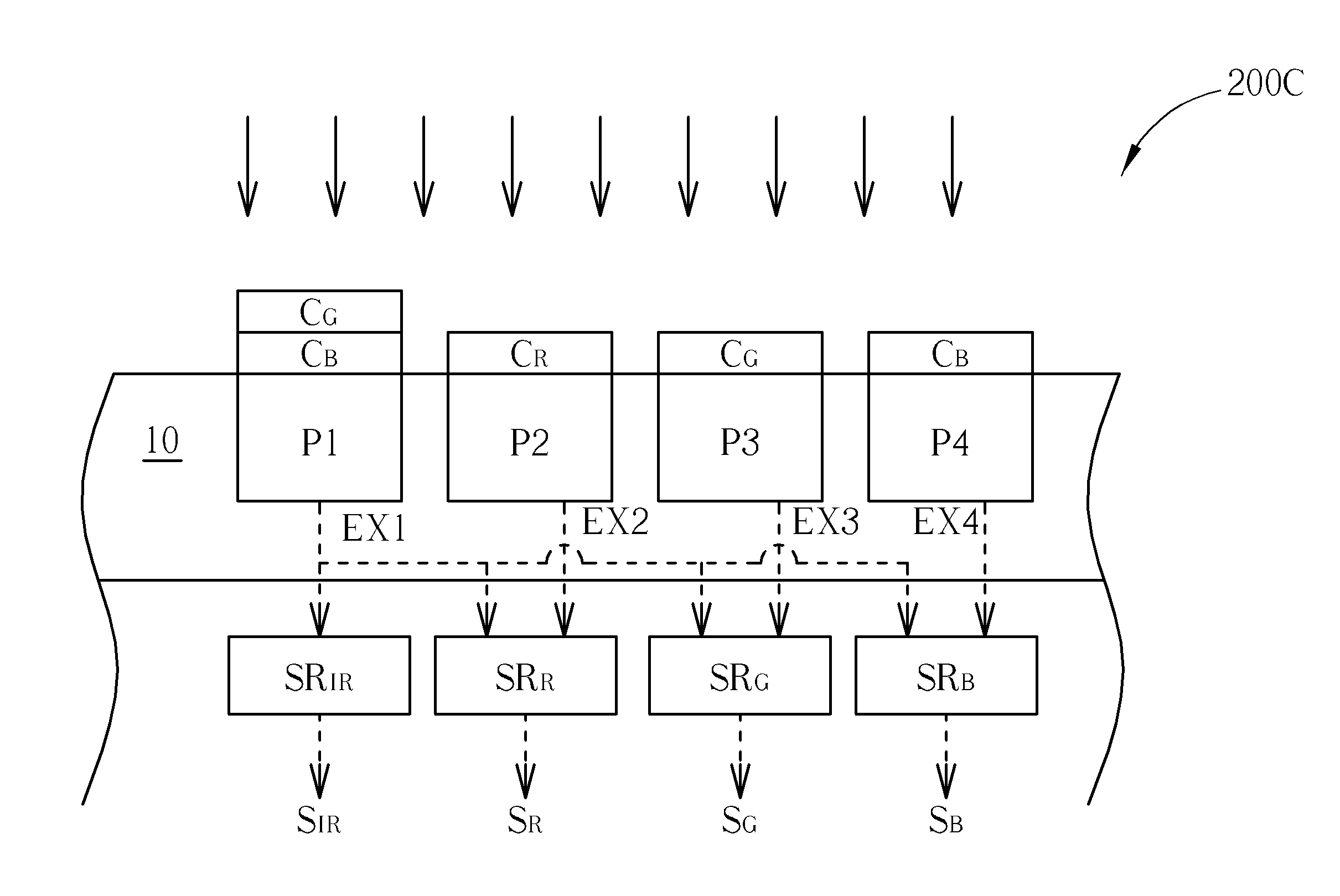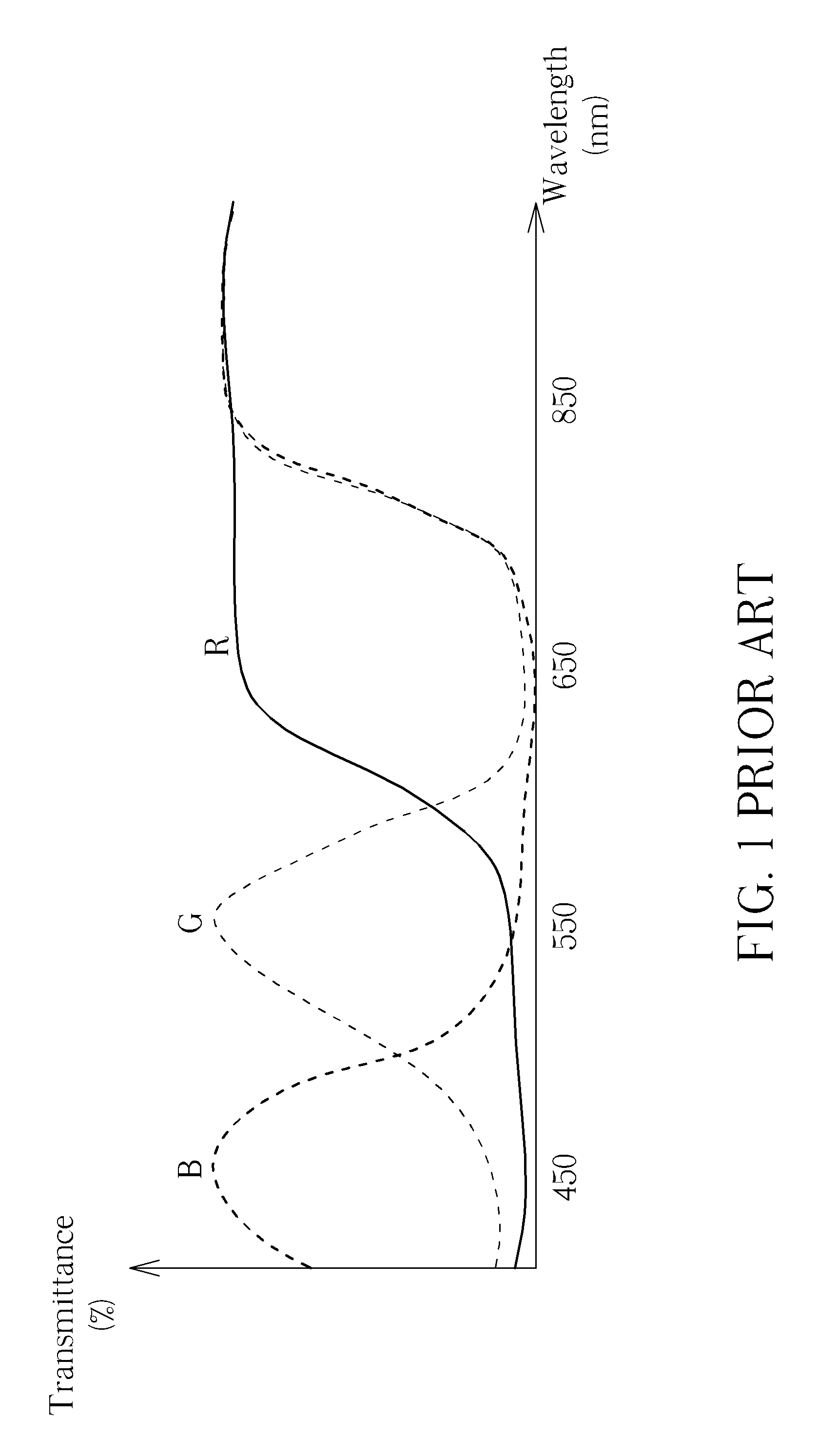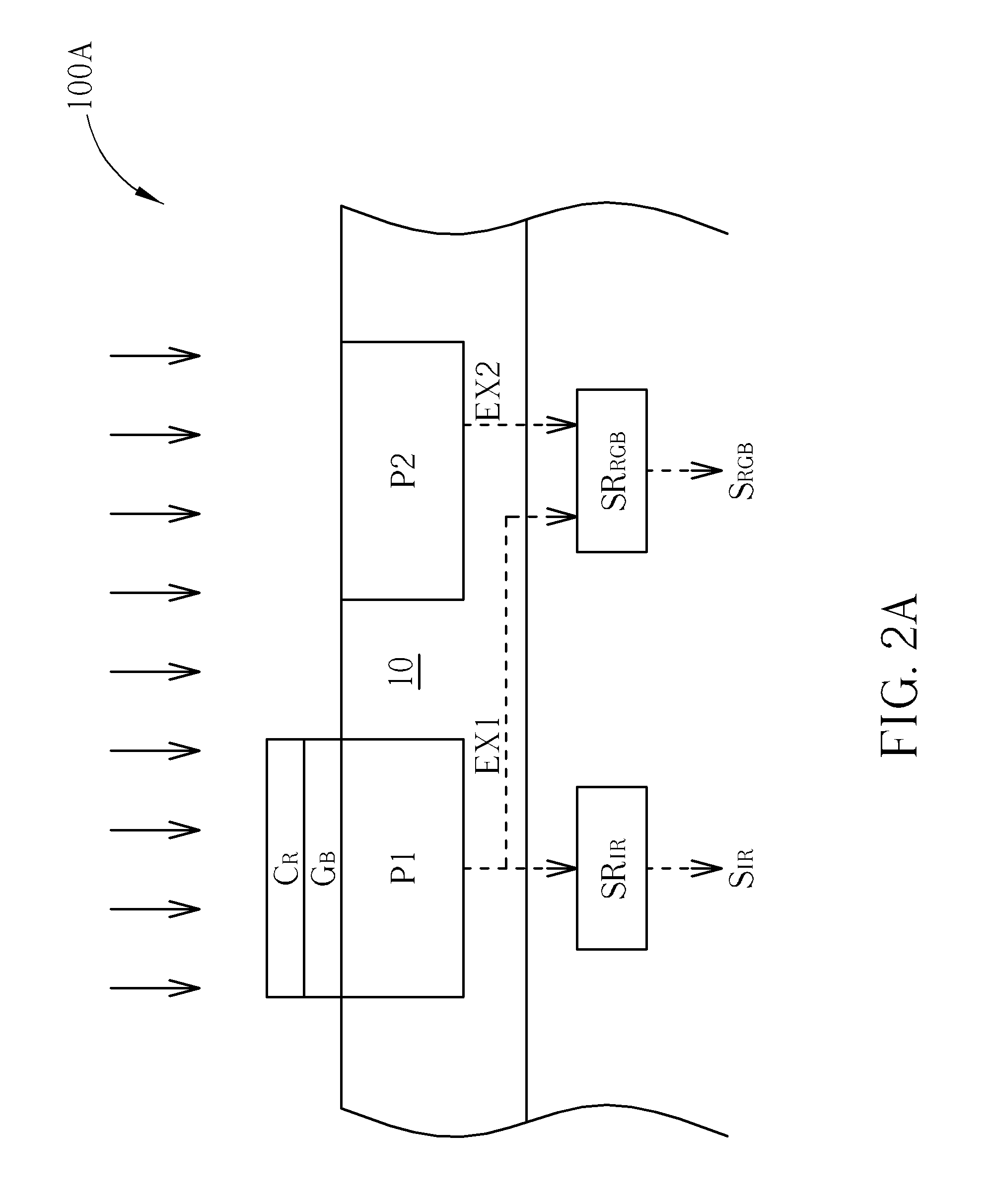Optical sensor capable of detecting ir light and visible light simultaneously
a technology of optical sensors and visible light, applied in the field of optical sensors, can solve the problems of reducing product yield, increasing manufacturing costs, and inaccurate results of prior art visible light sensors
- Summary
- Abstract
- Description
- Claims
- Application Information
AI Technical Summary
Problems solved by technology
Method used
Image
Examples
first embodiment
[0020]FIGS. 2A-2C are diagrams illustrating optical sensors 100A-100C according to the present invention. Each of the optical sensors 100A-100C includes an image sensor 10, a proximity sensor SRIR, and a visible light sensor SRRGB. The image sensor 10 includes a pixel P1 coated with two types of optical films and a pixel P2 without any coating. The pixels P1 and P2 of the image sensor 10 may absorb light and generate corresponding electrical signals. The proximity sensor SRIR and the visible light sensor SRRGB are signal processors capable of determining the intensity of visible light or IR light according to the electrical signals received from the pixels P1 and P2.
[0021]In the optical sensor 100A according to the first embodiment of the present invention, the pixel P1 is coated with a red optical film CR and a blue optical film CB, wherein the red optical film CR only transmits the red visible light (i.e. blocking light whose wavelength is not between 600-780 nm) and the blue opti...
second embodiment
[0026]FIGS. 5A-5C are diagrams illustrating optical sensors 200A-200C according to the present invention. Each of the optical sensors 200A-200C includes an image sensor 10, a proximity sensor SRIR, a red visible light sensor SRR, a green visible light sensor SRG, and a blue visible light sensor SRB. The image sensor 10 includes four pixels P1-P4: the pixel P1 is coated with two types of optical films, while each of the pixels P2-P4 is coated a specific type of optical film. The pixels P1-P4 of the image sensor 10 may absorb light and generate corresponding electrical signals. The proximity sensor SRIR, the red visible light sensor SRR, the green visible light sensor SRG, and the blue visible light sensor SRB are signal processors capable of determining the intensity of each visible light or IR light according to the electrical signals received from the pixels P1-P4.
[0027]In the optical sensor 200A according to the second embodiment of the present invention, the pixel P1 is coated wi...
PUM
 Login to View More
Login to View More Abstract
Description
Claims
Application Information
 Login to View More
Login to View More - R&D
- Intellectual Property
- Life Sciences
- Materials
- Tech Scout
- Unparalleled Data Quality
- Higher Quality Content
- 60% Fewer Hallucinations
Browse by: Latest US Patents, China's latest patents, Technical Efficacy Thesaurus, Application Domain, Technology Topic, Popular Technical Reports.
© 2025 PatSnap. All rights reserved.Legal|Privacy policy|Modern Slavery Act Transparency Statement|Sitemap|About US| Contact US: help@patsnap.com



